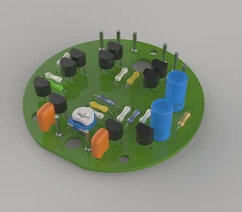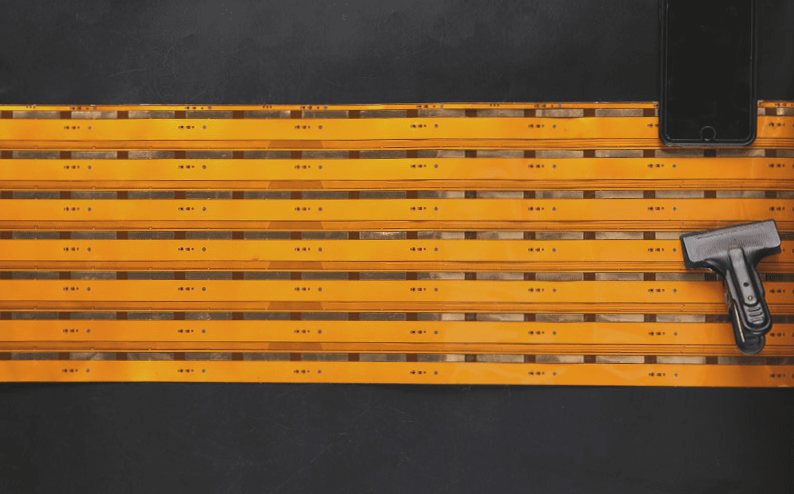1. Electroplating is an essential process in the manufacturing of core board PCBs.
2. The coating of core board PCBs varies based on the intended application of the board.
3. In the following sections, core board PCB manufacturers will provide a brief overview of the properties and applications of copper plating and nickel plating.

1. **Properties and Uses of Core Board PCB Copper Coating:** The copper plating layer exhibits a beautiful rosy hue, possessing a soft nature, malleability, and ease of polishing, along with excellent thermal and electrical conductivity. However, it oxidizes easily in the air and loses its luster quickly, making it unsuitable as a “surface” layer for protective or decorative coatings. Copper plating primarily serves as the “base” layer in multi-layer plating of steel parts and is frequently employed as a foundational layer for tin, gold, and silver plating. This bonding force also facilitates the deposition of surface coatings. When the core board PCB copper plating layer is non-porous, it enhances the corrosion resistance of the surface plating. For instance, thick copper and thin nickel plating in protective-decorative multi-layer plating are advantageous as they conserve valuable metallic nickel.
2. **Properties and Uses of Core Board PCB Nickel Coating:** Metallic nickel possesses strong passivation capabilities, allowing it to quickly form a very thin passivation film on the surface of components, which resists atmospheric corrosion and certain acids. Thus, the stability of the nickel coating in air is quite high. In simple nickel salt electrolytes, a fine crystalline coating can be achieved, offering excellent polishing performance. The polished nickel coating showcases a mirror-like luster while maintaining its sheen over time in the atmosphere. Additionally, the nickel plating layer demonstrates high hardness and wear resistance. Given the nature of nickel plating, it is primarily used as a base, middle, and surface layer in protective-decorative plating applications, such as nickel-chromium, nickel-copper-nickel-chromium, copper-nickel-chromium, and copper-nickel plating. Due to the high porosity of the nickel plating layer, it remains non-porous only when the plating thickness exceeds 25μm, leading to its general exclusion as a protective plating layer.
3. **Applications of Core Board PCB:** Core board PCBs are extensively utilized across various industries, and our daily lives are filled with electronic products crafted from them. The protruding floral design employed in clothing stickers effectively conceals the GPS positioning module, ensuring it remains hidden when the cover is closed. This design also protects the GPS unit during use. The filling material is a soft combed sliver that absorbs mechanical impacts, safeguarding the GPS positioning component. The intricate design of the clothing sticker not only serves a decorative purpose when affixed to clothing but also integrates seamlessly with garments to obscure the GPS module. Positioned on the chest, it allows for unrestricted movement for children, ensuring they are less likely to remove it, thereby maximizing the positioning functionality. Furthermore, the GPS module can be easily separated from the clothing sticker, facilitating the cleaning of the sticker and the replacement of a malfunctioning GPS unit, ensuring convenience and practicality. The convex floral shape is designed to encapsulate both the flocculent filling material and the GPS module, with the filling material wrapping around the GPS positioning main board.
2. The coating of core board PCBs varies based on the intended application of the board.
3. In the following sections, core board PCB manufacturers will provide a brief overview of the properties and applications of copper plating and nickel plating.

1. **Properties and Uses of Core Board PCB Copper Coating:** The copper plating layer exhibits a beautiful rosy hue, possessing a soft nature, malleability, and ease of polishing, along with excellent thermal and electrical conductivity. However, it oxidizes easily in the air and loses its luster quickly, making it unsuitable as a “surface” layer for protective or decorative coatings. Copper plating primarily serves as the “base” layer in multi-layer plating of steel parts and is frequently employed as a foundational layer for tin, gold, and silver plating. This bonding force also facilitates the deposition of surface coatings. When the core board PCB copper plating layer is non-porous, it enhances the corrosion resistance of the surface plating. For instance, thick copper and thin nickel plating in protective-decorative multi-layer plating are advantageous as they conserve valuable metallic nickel.
2. **Properties and Uses of Core Board PCB Nickel Coating:** Metallic nickel possesses strong passivation capabilities, allowing it to quickly form a very thin passivation film on the surface of components, which resists atmospheric corrosion and certain acids. Thus, the stability of the nickel coating in air is quite high. In simple nickel salt electrolytes, a fine crystalline coating can be achieved, offering excellent polishing performance. The polished nickel coating showcases a mirror-like luster while maintaining its sheen over time in the atmosphere. Additionally, the nickel plating layer demonstrates high hardness and wear resistance. Given the nature of nickel plating, it is primarily used as a base, middle, and surface layer in protective-decorative plating applications, such as nickel-chromium, nickel-copper-nickel-chromium, copper-nickel-chromium, and copper-nickel plating. Due to the high porosity of the nickel plating layer, it remains non-porous only when the plating thickness exceeds 25μm, leading to its general exclusion as a protective plating layer.
3. **Applications of Core Board PCB:** Core board PCBs are extensively utilized across various industries, and our daily lives are filled with electronic products crafted from them. The protruding floral design employed in clothing stickers effectively conceals the GPS positioning module, ensuring it remains hidden when the cover is closed. This design also protects the GPS unit during use. The filling material is a soft combed sliver that absorbs mechanical impacts, safeguarding the GPS positioning component. The intricate design of the clothing sticker not only serves a decorative purpose when affixed to clothing but also integrates seamlessly with garments to obscure the GPS module. Positioned on the chest, it allows for unrestricted movement for children, ensuring they are less likely to remove it, thereby maximizing the positioning functionality. Furthermore, the GPS module can be easily separated from the clothing sticker, facilitating the cleaning of the sticker and the replacement of a malfunctioning GPS unit, ensuring convenience and practicality. The convex floral shape is designed to encapsulate both the flocculent filling material and the GPS module, with the filling material wrapping around the GPS positioning main board.




